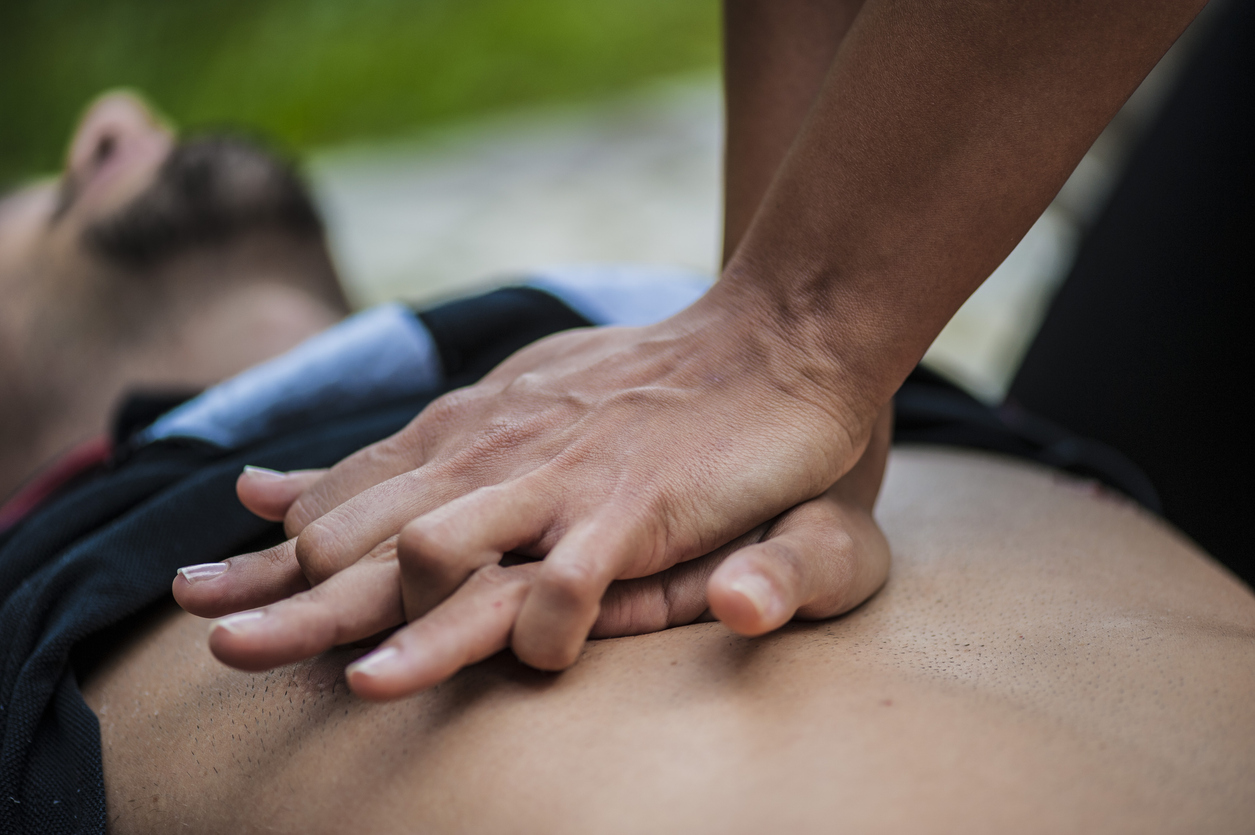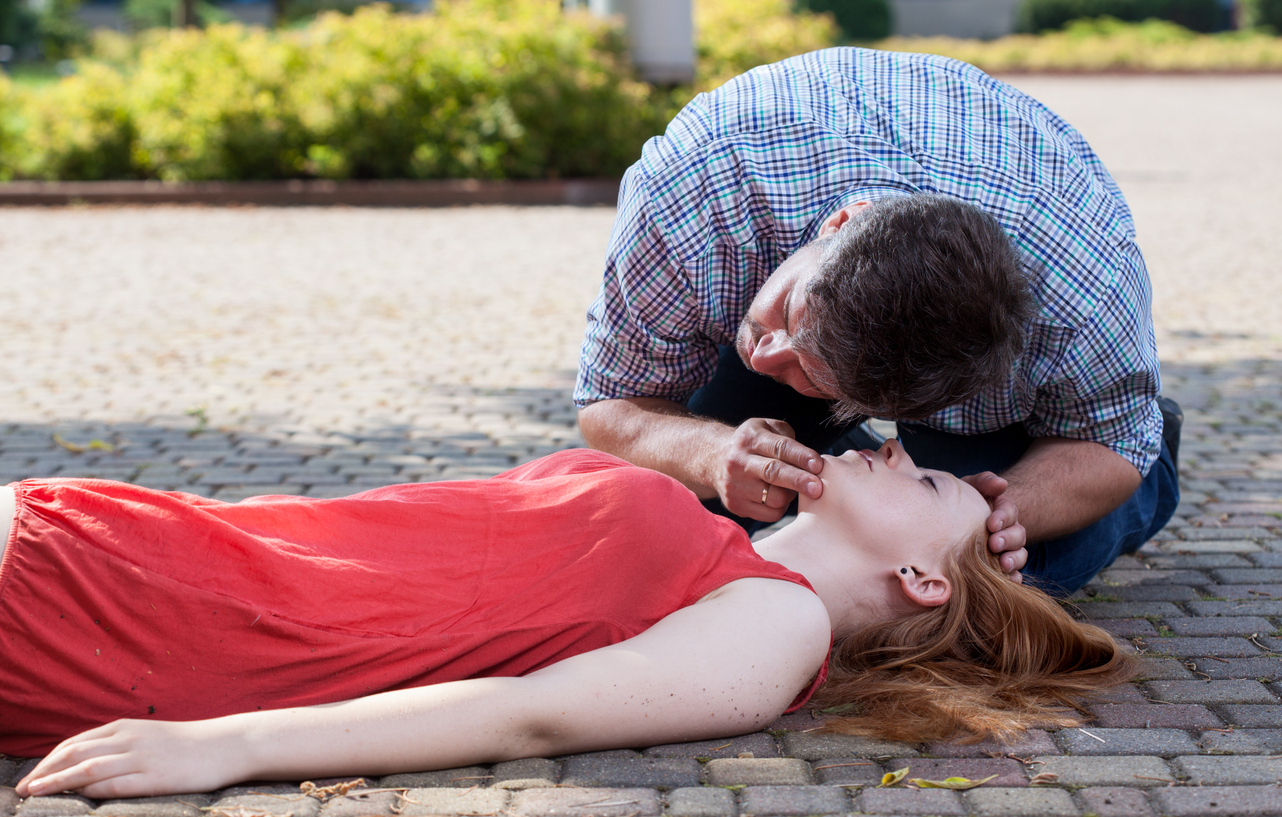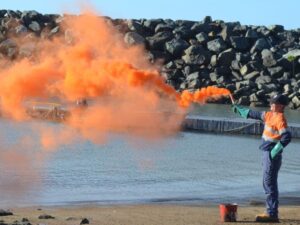HLT009 - Provide Cardiopulmonary Resuscitation - sample course
- Description
- Curriculum

-
1HLT009 - Course overview

This course overview will outline:
- The role of the first aider
- The definition of:
-
- first aid
- an emergency
- an accident
-
- Basic human anatomy
You will be required to complete this content in conjunction with your Learners Guide.
(Tip, where you see the text appear as the words 'Learners Guide' above, you can click on it to access a useful resource).
-
2Course overview (video)
This video will provide a short description with an overview of the content.
-
3What is first aid?
The concept and principles of first aid are based on relieving pain and suffering by casualty to avoid any further complication and illness or injury. It also includes the preventive measurements of worsening of illness or injury, to protect someone who is either conscious or unconscious, promote recovery process of possible, and preventive or reduction in any disability resulting from an incident.
-
4What is an 'emergency'?
An immediate risk to someone's health, life, property, or surrounding environment requires immediate response known as an emergency.
-
7The circulatory system
During the assessment process of identifying a casualty for any current or potential injuries, a first aider needs to be familiar with basic anatomy and physiology of the human body. This knowledge and understanding will help the first aider to determine the nature in injury and appropriate response to it.
-
8Circulatory system explained (video)
-
9The skeletal system
The skeletal system involves a structure of bones, ligaments, tendons, and muscles which join and hold the human body and organs together. Broken bones sometimes are visible or sometimes appear as deformity.
-
10The nervous system
The nervous system involves brain, spinal column, and nerves, which is the body’s communication system that takes commands from the brain, and takes messages back throughout the body to muscles, fibres, organs, and cells.
-
11The respiratory system
The respiratory system involves the lungs, nose, mouth, and trachea, which is concerned with breathing and associated with the circulatory system.
-
12Integumentary system
The integumentary system contains skin, hair, and nails.
-
13Digestive system
The digestive system contains the mouth, oesophagus, stomach, small and large intestine and other accessory organs like the liver, gallbladder and pancreas.
-
14Urinary system
The urinary system contains kidneys, ureters, bladder and urethra.
-
15Lymphatic system
The Lymphatic system works parallel along with your circulatory system and the main function of it is to prevent the body from infections.
-
16Potential hazard and risk management
Identification of risk and hazard for a first aider, which may affect the process of treatment the casualty and first aider as well. Proper management of risk requires immediate decisions to manage or handle the incident. Failure to respond promptly may result in the causalities injuries going from bad to worse and can lead it to death if not handled accordingly.
-
17Risks
Risk is known as the potential chances of any hazard affecting you or any person nearby it or can cause damage or life-threatening injury.
-
18Identification of hazards
d
-
19If the situation is too risky
d
-
20Conducting a risk assessment
Conducting a risk assessment means to assess the level of risk and potential outcomes.
-
21Dynamic risk assessment
Dynamic risk assessments are to be conducted where the risks are likely to be high, or unpredictable.
-
22Minimise the risk
After the process of hazard identification, it's vital to minimise the risk by introducing a number of control measures.
-
23Isolating the hazard
A first aid provider can try to isolate the hazards by following the tips in this lesson.
-
24Overview
This chapter will discuss the following performance criteria in detail:
- Recognise and assess an emergency situation.
- Ensure safety for self, bystanders and casualty.
- Assess the casualty and recognise the need for cardiopulmonary resuscitation (CPR).
- Seek assistance from emergency services.
-
25Recognise and assess an emergency situation
Recognition of an emergency
Recognition of an emergency is equally important as how you can handle it on the basis of your skills. Whenever you are responding to an emergency, it is important during the process of assessment, planning and intervention and making sure not to put yourself at risk. Just imagine, it is an amazing feeling to having the skills and knowledge to save a victim, but if you are putting yourself in danger it can be two victims instead of one then, and what if there will be no one to assist both of you.
-
261.2 Ensure safety
In every emergency situation, it's vital to ensure safety for yourself first, then ensure safety of any bystanders, before safely tending to the casualty. This section will address a six-step emergency plan, known as the DRABCD (pronounced 'doctor ABCD' as the 'DR' is an abbreviation for the word 'doctor'. Note that this doesn't refer to the first aider being a doctor, rather a guide to help remember each step, in order):
- Danger (safety)
- Response
- Send for help
- Airways
- Breathing
- Compressions
- Defibrillation
-
271.3 Assess the casualty
This lesson will provide a guide to assessing the casualty, and the ability to recognise the need for cardiopulmonary resuscitation (CPR).
-
281.4 Seek assistance from emergency services
This lesson will cover:
- Handing over to emergency services
- Emergency telephone numbers and when to use them.
- 106 - text based emergency reply service
- 112 - international standard emergency number
-
29Overview
Here, you will view a description of DRSABCD as an introduction to each step, which will be outlined further in the following lessons.
Source (“DRSABCD Action Plan Explained! | Education | St John WA”)
-
30Danger
Here, we will outline common dangers in most first aid scenarios and how to protect yourself and others from these dangers.
-
31Response
Check the casualty for a response by touching the casualty's shoulders and asking loudly 'are you alright?'.
Avoid shaking children and infants, there is no need to aggressively shake a casualty to gain a response, just touching the casualty on the shoulders and talking loudly is an effective method and will awaken a sleeping or mild drowsy person.
-
32Send for help
Calling emergency services
Dial Triple Zero' 000' or 112 for an ambulance or immediate medical assistance. In case of hearing disability, you can contact emergency service on ‘106', which is a teletypewriter service (TTY).
This lesson will outline what you need to know when sending for help by calling emergency services.
-
33Airways
Ensuring an open airway can save a life!
The airway is the connection (tube) between the back of the mouth (throat) and lungs. If a person is unconscious, their airway could be compromised, therefore it's essential to ensure an open airway before proceeding.
This lesson will outline step-by-step how to achieve that.
-
34Breathing
This lesson will instruct on how to keep the casualty's airway open and check for normal breathing.
Look, listen, and feel for signs of breathing for 10 seconds to indicate if the casualty is breathing normally.
-
35Compressions
The chapter will discuss the following performance criteria in detail:
- Perform CPR in accordance with the ARC guidelines.
- Display respectful behaviour towards the casualty.
- Operate an automated external defibrillator (AED) according to manufacturers' instructions.
-
36Compressions - infants
This lesson will outline:
- CPR techniques with infants
-
37Defibrillation
Defibrillation is the emergency procedure when the first aider applies an electronic device known as Automated External Defibrillator (AED) to the chest of a cardiac arrest casualty, and the device delivers a controlled electric shock to the casualty's heart.
-
38CPR - tips to remember
This lesson will outline:
- Chest compresson only CPR
- Multiple rescuers
- When to stop CPR
- When to get further help
-
40Perform cardiopulmonary resuscitation (CPR) in accordance with the ARC guidelines
d
-
41Provide first aid in accordance with established first aid principles
d
-
42Display respectful behaviour towards casualty
d
-
43Obtain consent from casualty where possible
d
-
44Use available resources and equipment to make the casualty as comfortable as possible
d
-
45Operate first aid equipment according to manufacturers’ instructions
d
-
46Monitor the casualty’s condition and respond in accordance with first aid principles
d
-
47Accurately convey incident details to emergency services
d
-
48Report details of incident in line with appropriate workplace or site procedures
d
-
49Complete applicable documentation, including incident report form
d
-
50Maintain privacy and confidentiality of information in line with statutory or organisational policies
d
-
51Potential psychological impacts
This section will cover the following components regarding potential psychological impacts after attending or helping a first aid incident:
- Recognise the possible psychological impacts on self and other rescuers and seek help when required.
- Contribute to a review of the first aid response as required.
-
52Contribute to a review of the first aid response as required.
d

